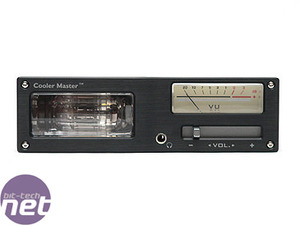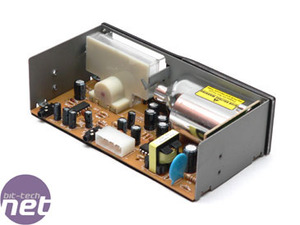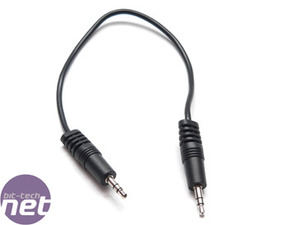

Just the one Musketeer today
A while back, Cooler Master started the Musketeer series of bay accessories. Some have focused on case temperatures and fan control, some have focused on making listening to audio on your PC more entertaining. They have all included VU meters to add visuals and basic controls geared to enhance your enjoyment of music. Coolermaster has recently released the newest incarnation that adds a new dimension to the mix by integrating vacuum technology.Audio purists have long held vacuum based audio equipment in high regard for its “warm” audio quality. The bottom line is that vacuum valves convey imperfections in audio signals in a way that is less harsh and more compatible with the human ear compared to the way that digital may. Some of you may recall the experiment that AOpen tried by adding a vacuum valve directly to several of their motherboards with only nominal success. Many perceived it as a cheap stunt and never really took it seriously. Let’s see if Cooler Master’s attempt is any more worthy.
In detail
The Musketeer 3 is a standard 5.25” bay accessory that is easy enough to install. It is available in both silver and black and you can be assured that it will match the look of your Cooler Master (and most likely other-brand aluminum case) very well. The Musketeer is meant to compliment your existing sound, not replace it. Its influence on sound quality is mearly as an in-line addition. It only has support for 2 channels so if you have multiple channel sound, it may not be the thing for you other than just for looks, but in that regard, it is rather smart looking. The main elements of the Musketeer are: vacuum valve, VU signal pressure meter and sliding volume control.

Once you have mounted the panel into one of your system bays, the remaining items are pretty straight forward. The Musketeer ties into your existing sound via a PCI expansion slot plate. Behind that plate are wires for input and output that are routed to the back of the 5.25” panel. Cooler Master provided plenty of length to route these to the Musketeer 3. Then, you use the double-ended 3.5mm connector from your existing audio-out to the PCI “in” port. The only remaining item is powering the panel with a single Molex (which I assume is only used for powering the LEDs for visual effect).


Listening
After installing, I plugged in my speakers and ran a gambit of different sound files and movies. There is a detectable difference in sound quality. You can definitely decipher the valve’s “warm” quality which is actually kind of hard to describe. It’s like the low and mid tones are married together and sound like they make more sense to your ear. One unexpected surprise is the high end range was very crisp and contrasted the mid-low tones. It sounds more like vinyl than CD, but a little crisper.One thing that Cooler Master actually warned me about is the volume. You will experience a noticeable power signal loss through the use of the Musketeer 3. There obviously isn’t any form of amp in it and the result of passing your sound signal through it must be leeching some signal strength. For my listening it really wasn’t an issue with either speakers or headphones, I simply had to set my volume levels higher in Windows than I normally would. If for some reason in your current regular listening you have your volumes set very high, this could become an issue though - although a headphone amp would sort out your worries. Typically, most PC sound output has more than enough signal to accommodate the sap that the Musketeer takes.

MSI MPG Velox 100R Chassis Review
October 14 2021 | 15:04






Want to comment? Please log in.